By 2050 the global population is set to rise to more than 10 billion people. But right now, 1 in 10 people are suffering from chronic hunger. So how do we reconcile a rising population with an already hungry world? Plus in the news, why scientists are one step closer to understanding autism, and we take a moment to say goodbye to the Philae Lander...
In this episode
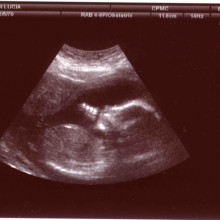
01:05 - What causes autism?
What causes autism?
with Dan Littman, Howard Hughes Medical Institute
Children born with autism struggle with their speech and language development, and they often have social and behavioural difficulties too. Scientists don't know what causes the condition, but in some cases the problem has been traced back to infections in an affected child's mother during her pregnancy. Now researcher Dan Littman, from the Howard Hughes Medical Institute in New York, has found in mice that a signal made by the immune 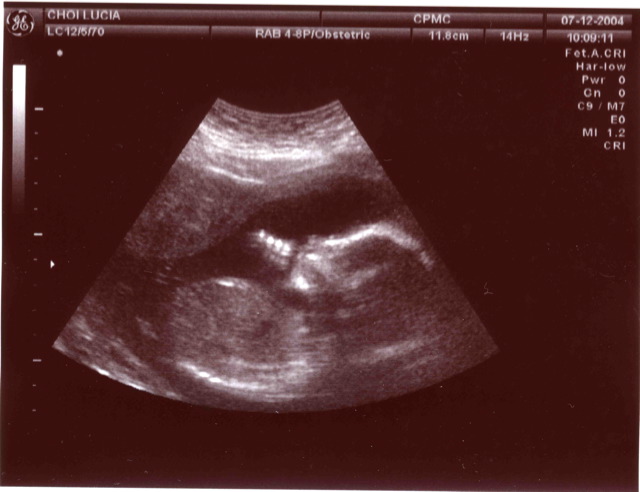 system reacting to infection can get across the placenta and into the brain of a developing foetus. There it appears to trigger brain and behavioural changes, as he explains to Chris Smith...
system reacting to infection can get across the placenta and into the brain of a developing foetus. There it appears to trigger brain and behavioural changes, as he explains to Chris Smith...
Dan - There has been speculation for quite some time that infection during pregnancy can lead to a higher propensity for having children with Autism Spectrum Disorder. A number of years ago, researchers developed an animal model and it's been shown that a substance that mediates communication between cells of the immune systems needs to be present in the mother in order for the behavioural deficits in the offspring. So we wanted to know what were the downstream pathways from this particular immune molecule, and found that there is transmission across the placental barrier and across the blood brain barrier in the foetus, such that substances from the immune system of the mother can actually talk to the developing central nervous system in the foetus.
Chris - So what is the molecule that's been found to be in the immune system of the mother that does this?
Dan - The molecule is called interleukin 17, and it is a molecule that's known to be important in protecting various barriers of the body, such as the intestinal tract, from all the microorganisms that are present there. And it's also a molecule that's known to be involved in autoimmune diseases, such as psoriasis or rheumatoid arthritis.
Chris - How did you find this? What did you actually do to show what the impact and influence of that interleukin signal was?
Dan - What we did was to induce the inflammation in the mother using a substance that mimics a viral infection, and after that we injected an antibody that targets this immune system molecule and basically inactivates it and showed that if we do that, we no longer see the behavioural changes in the offspring, and we also don't see the changes in the pattern of brain development in the foetal development.
Chris - How do you know then that the interleukin signal is what is going across the placenta and influencing the developing brain and not engaging with, or changing something else that then goes into the developing baby and causes the autism-like picture?
Dan - The evidence is that we discovered a receptor for this particular mediator (interleukin 17) is present in the developing foetal brain, and we can actually inject this mediator directly into the foetal brain and basically produce the behavioural and developmental changes, and this only occurs if the foetus has the receptor for this mediator. So it's very likely, this is the molecule going across the placenta, across the developing blood brain barrier and acting on the foetal brain.
Chris - And is that sensitivity there all through pregnancy or is there, sort of, a vulnerability window when an infection in the mother is most likely to produce an infant with behavioural change?
Dan - We believe that only during the second trimester is there susceptibility for the transmission of this particular behavioural change.
Chris - What is the purpose to the brain of using this particular signal? Infections are common, infections in pregnant mothers are common; it seems seems rather bizarre that the brain should be so sensitive to such a common signal in such a devastating way.
Dan - This is a very interesting question. A lot of receptors are used for multiple purposes; it is possible that it's a receptor for another mediator that we don't yet know about; it is possible that this particular mediator does actually act on that receptor for purposes we don't yet understand.
Chris - You did this in a mouse. Do humans have the same transmitter chemicals, the same signals that the immune system uses in these mice and, therefore, is this relevant to humans as well, do you think?
Dan - Yes, humans have almost exactly the same set of mediators and receptors. In fact, the mediator interleukin 17 is critical in illnesses like psoriasis, and the receptor for interleukin 17 is present in human brain, although this hasn't been looked at in great detail yet to see whether it's present in the same types of cells as in the mouse.
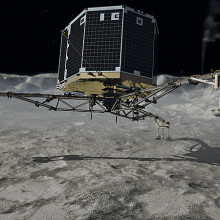
06:07 - Goodbye Philae!
Goodbye Philae!
with Andrew Coates, UCL Mullard Space Science Laboratory, and Ian Wright, The Open University
Philae is the lander that shot to fame when it landed, not once, but, in fact, three times as it bounced across the surface of comet 67P. It's part of a mission that was 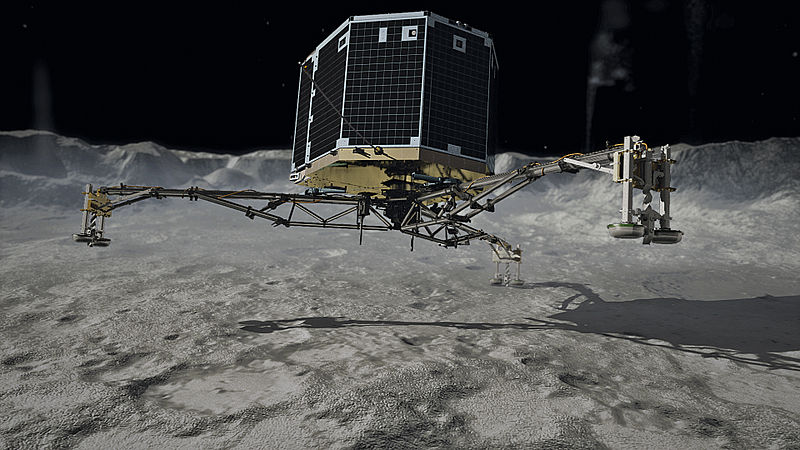 decades in the making and also a YouTube sensation thanks to "that" reaction from team-member Monica Grady when it landed.
decades in the making and also a YouTube sensation thanks to "that" reaction from team-member Monica Grady when it landed.
Philae, and the Rosetta probe that delivered it, are both now nearing the ends of their operational lives. Connie Olbach has been looking over what the first mission ever to land on - and analyse - a comet has achieved, beginning with mission scientist, Andrew Coates...
Andrew - What's happening now is that the comet, the spacecraft Rosetta and Philae, the lander, which is still on the surface of the comet, these are all getting further away from the sun, further and further with every second as we speak, of course. As we get towards the end of January, then the temperature in the lander is getting lower. There's a particular temperature limit of -51 degrees centigrade where it gets too cold for the batteries, and too cold for the electronics to work, so we give up hope really after the end of January
Connie - A sad thought for those of us who have become attached to the little lander. But all is not lost, Rosetta is still in good shape and will keep orbiting until September. For now though, let's say our goodbyes - Philae lander this is your life... Let's start by delving back into our archives. This is Ian Wright, a scientist working on the Rosetta mission.
Ian - Rosetta was born as a comet nucleus sample return mission. So this was not merely going to go to a comet; it was going to drill down 3 metres into the surface, collect the core and bring it back to Earth undisturbed. It turned out that this was technologically quite challenging and beyond the financial means of the world space agencies, because this was going to have to be a joint venture. So eventually, in the early 90s, that idea was sort of knocked on the head, at which point ESA decided to go it alone and do this one way mission. And then all of a sudden there was absolutely no chance of doing that so the question was, well, if you can't bring the sample to the instrument, can you take the instrument to the sample and that's ultimately what we had to do.
Connie - Rosetta launched back in 2004. It was then a good ten year wait for it to reach the comet 67P. This was the site of the first ever soft landing of a probe onto a comet, and the scene of the celebration made news around the world.
"How audacious! How exciting! How unbelievable! To be able to dare to land on a comet..."
"We are the first to have done that and that will stay forever."
"Hollywood is good, but Rosetta is better."
Connie - But, amid the excitement, not everything was going exactly to plan. Here's Andrew Coates again.
Andrew - Something was obviously going wrong. You could see it in the eyes of the controllers and some frowns and so on from the control room, and we found out it had bounced to about, something like, 100 metres - a little bit more than that perhaps - away from the surface, and then came down again, bounced off the surface again, and came to rest finally in this really difficult place with boulders and next to an icy cliff, and in an orientation with one leg up in air of the lander, which you can see on the images.
Connie - The problem with this slightly awkward landing was that Philae was in a shadow; meaning no light could get to it's solar panels and the batteries only lasted two and a half days. But it wasn't all bad news - the bouncing gave Philae exposure to different areas of the comet and it still managed to send back 80% of the data...
Andrew - Anything you get from a lander like this is actually really good information. So we were able to get several new organic molecules identified by the mass spectrometers. Those have never been seen in remote sensing, or in in-situ measurements of comets before and also finding that the magnetic field of the comet is non-existent and so that puts constraints on the importance of the magnetic field in the beginning of the solar system. Now, there have been some theories about magnetism being very important in terms of bringing the early planetesimals together - these are the building blocks of planets. And it turns out now, according to the results from Philae and the Rosetta orbiter - the combination of those two - that actually turns out not to be the case. And so magnetism actually didn't play a role in the early solar system.
Connie - Maybe it's just me, but we've all got a bit attached to Philae. We give it human characteristics and the idea of sending it off is so much sadder, I think, because Philae seems like a friend almost.
Andrew - So both the orbiter and the lander have their own twitter accounts and it was amazing; they were effectively giving both of them their own personality and getting Philae to contact and say - yes, I'm alive and able to be sending data. It sounded so familiar and really does make you identify with these space projects. This is a great way of getting the public involved in space missions. I mean, they seem very remote, of course, and to actually be able to empathise with it and be there with it almost was fantastic and a new way of doing outreach. And I think that particular aspect of it, with Rosetta in particular, has been extremely successful.
Connie - So Philae has gone but, hopefully, not forgotten...
Andrew - Absolutely...
Connie - What's the legacy that Philae's left behind? There will be learnings, I'm sure, and are we going to see any more Philaes going out afterwards. Maybe Philae babies landing on more comets?
Andrew - I'm sure we will. And at some point people will propose more cometry landers. There will be, you know, one type of comet which is becoming more, and more important now are main belt comets. So this is a new type of sort of asteroid, but it's in between an asteroid and a comet and these are objects which appear to have water, have activity, in the same way that a comet does but it's in the asteroid belt. And so these are maybe the more likely things to have actually brought water and, possibly, organic molecules to the Earth and so, that type of object is something which will have exploration in the future, I'm sure.
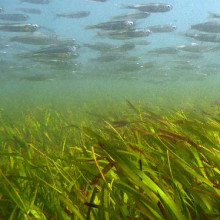
13:32 - Secrets of seagrass the saltwater crop
Secrets of seagrass the saltwater crop
with Carlos Duarte, King Abdullah University of Science and Technology (KAUST)
Seagrasses are marine plants which actually evolved first on land and have since migrated back into the world's oceans. They might hold the key to freshwater shortages, according to scientists in Saudi Arabia. They've decoded the DNA of one of these plant species and by comparing the genetic sequence with land-living relatives of seagrasses, including rice, they can see which genes have been 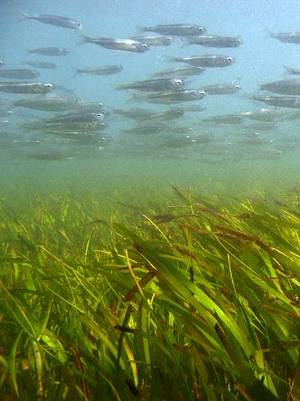 altered to endow the plants with the ability to thrive in seawater. Now they know this, the same genes can be bred into food plants so that they can tolerate much saltier soils, as Carlos Duarte explains to Chris Smith...
altered to endow the plants with the ability to thrive in seawater. Now they know this, the same genes can be bred into food plants so that they can tolerate much saltier soils, as Carlos Duarte explains to Chris Smith...
Carlos - We have published our analysis of the DNA sequence of a group of plants called seagrasses that can grow fully submerged in the water that allow us to understand the changes that higher plants underwent to be able to colonise this environment, and that has implications for our hopes to be able to grow crop plants that will feed the world in the future. Not with fresh water, which is becoming increasingly scarce, but with saltwater, seawater.
Chris - Now, when you say "colonised the ocean," do you mean that these plants didn't come from the ocean in the first place? The plants we see in the sea - this group of them - came out of the sea and went back again?
Carlos - So we're talking about flowering plants, and flowering plants evolved from marine ancestors that then first colonised freshwater and wetland type of environments, and then they went on from there to colonise dry land, and they also went back and recolonised the ocean, where their ancestors had originated from.
Chris - How did you know they did that?
Carlos - Because we have molecular tools and looking at the structure of their DNA, we can establish the ancestry of the different groups of plants and by that ancestry we know which ones have evolved first, and which one descended from the previous ones.
Chris - How would I recognise a seagrass if I saw one?
Carlos - They are rather inconspicuous to us and they are just like grass! Our audience can probably see them when they walk around the beaches in low tide, and they would be plants anywhere from 4-5 cm in size up to 2 m length leaves.
Chris - How do they reproduce?
Carlos - They are flowering plants, so they reproduce sexually but all of them are clonal also. They are able to produce many copies along the stem, called a rhizome, that lies horizontally on the sediment. And we also discovered that some of these plants - seagrasses - they are the largest and the longest-living organisms still present on Earth. In the Mediterranean we found a set of particular clones that extended over more than 10 km of sea floor - so they were massive. Many, many times the weight of Blue Whales and we also calculated their age to be about between 30,000 and 100,000 years old, the plants that we see living today. So, they are very long-lived organisms and very large.
Chris - Given that these plants are very similar to grasses and cereals and rice which, let's face it, feeds the majority of humans on Earth: given those similarities, how can you exploit that, and what you've learned from the genome, to potentially turn these plants into food crops? Is that possible?
Carlos - Well that may be possible. In fact, looking at the use of these plants by different cultures, at least two of the sixty species have been used, and are being used by some cultures as a source of food and staples.
Chris - Already?
Carlos - Already, yes. One of them is eelgrass. This produces seeds that are very similar to rice and Seri Indians in Baja California, they traditionally harvest these seeds and use them in the same way that we use rice today. And another plant that grows in Southeast Asia and that one produces very large seeds that have the shape and the size of a nut...
Chris - Are they any good? Do they taste nice?
Carlos - Actually, I have eaten them and they are quite nice. And they are harvested and also eaten by people in the Philippines and other regions in Southeast Asia.
Chris - So we could, potentially, sort of increase that as a food source. But what about, also, borrowing from biology and taking the knowledge these plants have evolved to tolerate those environments, and bringing that back into land dwelling plants, given the close relationship, to confer the ability to grow in really quite poor soils or salt dominated soil?
Carlos - Yes. So, indeed, that was one of the drivers of our research was to try to understand how these plants were able to cope with full strength seawater and grow in full strength seawater. So we could then transfer these mechanisms to some of the crop plants, and the candidate target plant will be rice because rice is also an aquatic plant, and if we will look at the family tree of higher plants, rice is actually very close to seagrass. So now that we have discovered seagrass are able to cope and grow in full strength seawater, we are hoping that we might be able to find ways in which we can assist rice to be able to be grown in increasingly brackish, perhaps all the way to full strength seawater, and alleviate the pressures on freshwater resources that are capping already and will constrain in the future the capacity to produce food to feed an increasing population on Earth.

19:26 - Does baby brain exist?
Does baby brain exist?
with Kat Arney, The Naked Scientists
Each week Kat takes scientific dogma to task and she asks "is there actually any evidence for that?" - and this time the term 'mythconception', which is what we call this bit of the programme, is rather appropriate... 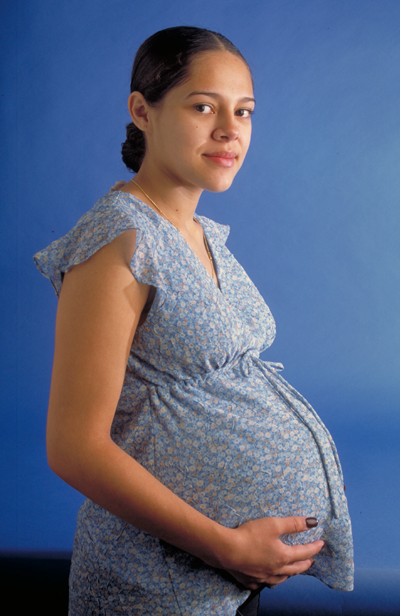
Kat - If you're a woman in your 20s or 30s and enjoy idly scrolling through social media, there comes a time when you realise that the pictures of people having fun in the pub seem to have been overtaken by photos of your friends with bulging bumps, rapidly followed by pictures of their bouncing babies.
And inevitably, there will be comments about 'baby brain' and 'preg head', or 'momnesia' as it's known in the US - the commonly held idea that being pregnant and having a baby somehow affects your memory, making you flakey and forgetful. But is there any scientific evidence to support this?
The fact is that the evidence here is mixed. Some studies have shown that compared with women who weren't pregnant, baby-bearing women do worse at certain memory tasks, particularly if they involve short term memory. There's a particularly notorious study from 1997 showing that women's brains actually shrink during late pregnancy, and take a full six months to go back to normal.
Research with rats has shown that females actually seem to get mentally sharper after having a baby, and are better able to find food than those who've never had pups.
And a small 2015 study found no difference between pregnant women and mums, and those who had never popped a baby out.
Finally, a recent analysis in the New Scientist magazine in January this year attempted to gather together all the evidence, concluding that while pregnancy and its hormonal storm does cause major changes in the brain and body, these aren't specifically linked to a change in mental agility.
So what other explanations can science offer for women who do feel that their faculties have gone to pot while they're baking their bump? Well, for a start there's the well-known effects on memory and learning of a lack of sleep - something that can certainly affect pregnant women and new parents. Then there's the psychological effects of shifting priorities and a new routine that a new baby brings. Some things just become less important and slip through the net when there's a tiny new life to think about, and it's impossible to remember everything.
Finally, there's also the phenomenon of confirmation bias: we all forget stuff and make mistakes - women with or without children, and men too. But if you're pregnant, you might be more likely to ascribe your errors to baby brain. And because women who've had children are still more likely to be discriminated against when coming back into work than the "sprog-less", it's high time to forget about the myth of baby brain.

22:10 - Could terrorists 3D print guns?
Could terrorists 3D print guns?
with Tim Minshall, Cambridge Institute of Manufacturing
Back in 2013, a US group called Defense Distributed headed by the then law  student Cody Wilson caused a stir when they unveiled a gun they'd made - and successfully tested - using 3D printing. Made principally from plastic, many expressed alarm that such a weapon could be used to bypass airport security scans, which would make it a useful tool for terrorists. Now the same group claim to have come up with a plan for a mass-produced machine gun made the same way. They say you could just download the instruction file and feed it to your own 3D-printer at home and actually make the weapon. Tim Minshall from the Cambridge Institute of Manufacturing joins Kat Arney to split fact from fiction and tell us how you might go about 3D printing a gun...
student Cody Wilson caused a stir when they unveiled a gun they'd made - and successfully tested - using 3D printing. Made principally from plastic, many expressed alarm that such a weapon could be used to bypass airport security scans, which would make it a useful tool for terrorists. Now the same group claim to have come up with a plan for a mass-produced machine gun made the same way. They say you could just download the instruction file and feed it to your own 3D-printer at home and actually make the weapon. Tim Minshall from the Cambridge Institute of Manufacturing joins Kat Arney to split fact from fiction and tell us how you might go about 3D printing a gun...
Tim - Well, the idea here is that 3D printing is what's called an additive manufacturing process as opposed to a subtractive one. So, in this case, you start off with nothing and build up the object you want layer by layer. So, in this case, what's happening is you're downloading a digital file that defines this object - in this case a gun. You send that to a 3D printer, which literally builds it up one layer at a time until you end up with an object which can be used as a gun.
Kat - So, the big question is, of course, would it work? You know, if it's actually worth to painstakingly print one of these things. Will it actually work? Should we be scared and running for the hills?
Tim - So, it's a great question and a very topical one. So I think - and I have to be slightly careful here - but I suspect if ISIS want guns they can probably find other ways to get them. So there's much more convenient ways of getting hold of a gun than 3D printing one.
Kat - Yes. It seems like it's a very convoluted way if you want to just kill someone.
Tim - Absolutely. So the problem here is that this 3D printer's got the Star Trek replicator image that people think it's just a plug and play thing. But actually, there's a huge amount of craft skill required to make sure that these printers work properly and big firms like Rolls Royce and G.E. use this technology, and they're comfortable with it, because they've invested millions over a long period of time in developing this technology and now they're seeing real benefits from it. But you can't just order a printer, open the box, plug it in and then print a reliable working gun - it's just not like that.
Kat - I know. Some of my friends have 3D printers because they're a bit nerdy and I see some of the stuff the make and I'm like "mmm - that looks nice". So a home 3D printer wouldn't have the finesse, maybe, that is needed to make a gun?
Tim - Yes and to put some facts behind this. So the National Ballistics Intelligence Agency, which I didn't know about before, have warned that these home printed guns are a real and serious threat. But they're a threat to the user because most of the ones they tested blew up when they first used them. So there's a real problem here about what could look like a gun and what actually works like a gun. But this particular one that's been in the news, which has the lovely name of the "shooty". It is a 3D printed semi-automatic weapon and it is made predominantly of plastic parts. But, it still needs some metal parts - barrel and firing pin - things like that, and it really bulky. To make it strong enough, out of plastic, to withstand these enormous pressures and the heat of repeated use, it has to be pretty huge.
Kat - People won't be knocking this up in their garage anytime soon?
Tim - I don't think so. I mean there are machines you can use to print a proper metal weapon, and this has happened, but that's not the £100/£200 plastic printer. These big ones, they cost hundreds of thousand of pounds; require very specialist supplies of gas, atomised powders, and inert argon gas to provide the right environment, and a lot of skill to get it to work right. So those machines do exist and you could print a gun on them but it would be fantastically expensive way of doing it.
Kat - I mean, moving back to the plastic guns. Some people worry very much that if someone's got a plastic weapon, they could get through a metal detector or maybe get a gun onto a plane. Is that a serious risk?
Tim - There's always a risk but so the metal detector bit. Yes, if there's still a firing pin and a barrel, then those will be picked up. Then you could say "well what about all the other bits," but if you go online and look at the picture of this "shooty" gun, it's huge and pretty gun like and it would be quite hard to disguise that shape. So I think the other sensors that they use at airports would pick up this strangely, glowing, gun-like object and might be a bit surprised to see it there.
Kat - And I guess you've got to have metal bullets?
Tim - You have to have the bullets as well - yes. That's very true.
Kat - So yes, they're not going to get through are they? I mean this is an issue, I suppose, people will always want to raise these risks of 3D printing? Is there a risk that we could throw the 3D printer bay out with the bathwater if we say "no, this is all too dangerous - people are going to make bad stuff?"
Tim - This is a real concern and so, I guess, it's the same with many new technologies. When it comes along there's is always, very often, a good side to it and a less good side to it and we see this very clearly with 3D printing. They are using them now - companies like Rolls and G.E. - to make these incredible, much more powerful, efficient jet engines. In medical care, we see perfectly customised orthotics and prosthetics being produced; there are really good uses of this to improve surgical outcomes, and many, many more good things. But I think, in the context of what we're talking about here, this is about digital rights management. This is actually about getting access to the knowhow, and how to make a gun, and that knowhow being available freely online. So this is really about the ability to produce an unlicensed, unregistered and hence, untraceable weapon. Now 3d printing is just one of the ways by which that could be done, but it's really about how do we control the design of 3D printed objects. Not just for guns but for all other objects as well.
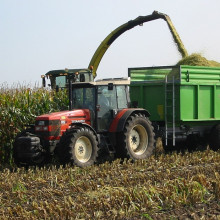
27:51 - The facts of food security
The facts of food security
with Tim Benton, University of Leeds
In today's scientific world, why are people still going hungry and what what more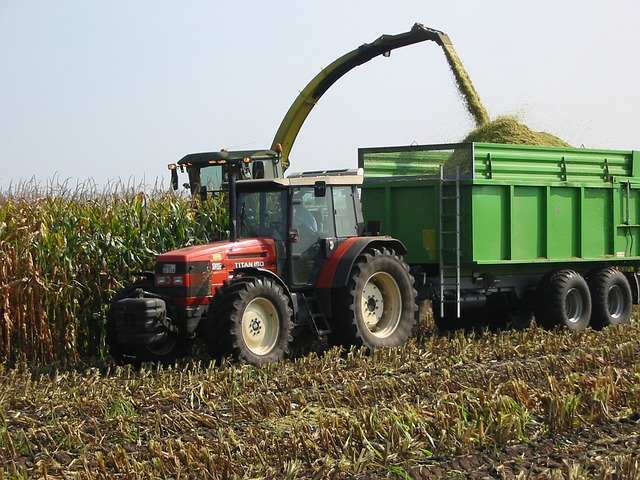 do we need to solve the food security challenge? Tim Benton is Professor of population ecology at Leeds University and the UK Champion for Global Food Security. He outlines the problems and possible solutions to Chris Smith...
do we need to solve the food security challenge? Tim Benton is Professor of population ecology at Leeds University and the UK Champion for Global Food Security. He outlines the problems and possible solutions to Chris Smith...
Tim - Food security roughly means having access to sufficient, safe and nutritious food for a healthy life and, clearly, when this term is used, most people think about the 800 million people or thereabouts who suffer chronic daily hunger but it's also important to the poorest in all societies. So, for example, in the developed world the poorest often have access to lots of cheap calories in terms of fat and sugar, but very poor nutrition and that leads to an association between poverty and obesity, and obesity and other diseases like diabetes. So food security is not just about starving people in Africa, it is about health, nutrition, and well being, and all of the things that flow from those.
Chris - It sounds slightly paradoxical, doesn't it, that - in a bigger world and a hungrier world - that actually one of the problems could be obesity; but, as you say, food security equals good nutrition too...
Tim - Absolutely. Yes.
Chris - Now how is the situation actually evolving or changing? We know that world population is increasing; it's increasing at the rate of maybe 1% per year, which doesn't sound like much, but if you do the compound interest formula that's a doubling every 70 years or so. Hence the prediction of as many as maybe 10-12 billion by 2050?
Tim - Yes, so there were two things. One is the population growth and the other one is as on average as the world gets richer, people eat different things and they eat perhaps more intensively produced food, which comes with a bit of an environmental impact. The projections are that over the next 35 years, up to mid-century, demand for food is set to rise by between 50 and 100% depending on who you listen to. And that's absolutely not impossible because over the last 35 years, looking back over the same time, production has increased by just over 100%. The issue, I think, is not over whether we can do it but whether we can do it in a way that's sustainable.
Chris - Can we just go business as usual? If we just carry on as we are, will we just run out of food?
Tim - I don't think we will run out of food. I think this issue is that the environment will suffer. It's not just that, at the moment, a quarter of the world's soils are degraded, agriculture is the biggest threat to biodiversity, a huge polluter of water through nitrogen fertilizer but, actually, agriculture and food between them, in terms of the greenhouse gases they emit, accounts for about the same as all lighting, all cars, all air travel,all washing machines, all heating, and all air conditioning. That means that if we carry on in the way that we're going with yields growing in the way that they are and demand growing in the way that it is, by 20150 agriculture and food will account for about 2 degrees of global warming. And that is more than all that the governments have just signed up to try and limit in Paris, and if we miss the Paris targets through agriculture and food alone, then clearly there isn't any space for any of the other things that we use energy for and that locks us into a world of 4 or 5 degrees of global warming by the end of the century, which is truly horrific to think about.
Chris - Should we not just invest the money, instead of trying to, as they put in "The Martian" so well, "science the hell out of this" and increase our food production... shouldn't we just get to the nub of what's causing this, which is there are just too many people, and spend the money on population control instead?
Tim - I don't think it's just that there were too many people. I think it's also that we place very significant demands on the environment to produce what we want. So, for example, if you look at the fact that about a third of the world's production is lost or wasted; if you look at the 2 billion people that are overweight and consume too many calories, and if you look at the amount of resources that we grow and feed to livestock for meat production. If we changed our diets, we could easily reduce demand by somewhere up to about a half. So it's not just about how do we grow more food, although clearly we do have to grow more food? It's also what are the ways that we can change the societal demand so that we can live within the planetary boundaries.
Chris - So to meet those obligations, and to avoid destroying the planet in the way you've outlined, and probably leading to the gross increase in the amount of CO2 and, therefore, the attendant climate change it may drive. What's this going to take? What do we have to do right here and now?
Tim - Well. So I think the three broad classes of solution; one is that we can do better in the field, we can improve yields - we know we can improve yields using modern biotechnology and modern plant breeding - whether or not it's GM is another discussion. But we can also increase efficiency of our agriculture either by changing the plants or by using smarter machines or we can improve the way that we use land and use land much more smartly to reduce some of the environmental impacts. Clearly, there's a lot we can do to reduce waste, which is the second of the three things. At the moment, Europe and North America throws away from the home about the equivalent of all production from Sub Saharan Africa, each year. So it's that sort of scale of things. And the third basket is the changed diets. So, in an American situation, I did the analysis last year, a family of four eating an average amount of meat, driving two cars an average amount, they emit more greenhouse gases from the meat than they do from driving the cars. So, just by reducing their meat to about half of what they would normally do, is about as equivalent of getting rid of a family car. Perfectly possible to do.
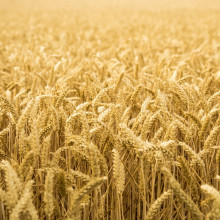
34:07 - Food in the field
Food in the field
with Alison Bentley, National Institute of Agricultural Botony
Clearly there are a lot of options but the first point at which we can intervene in 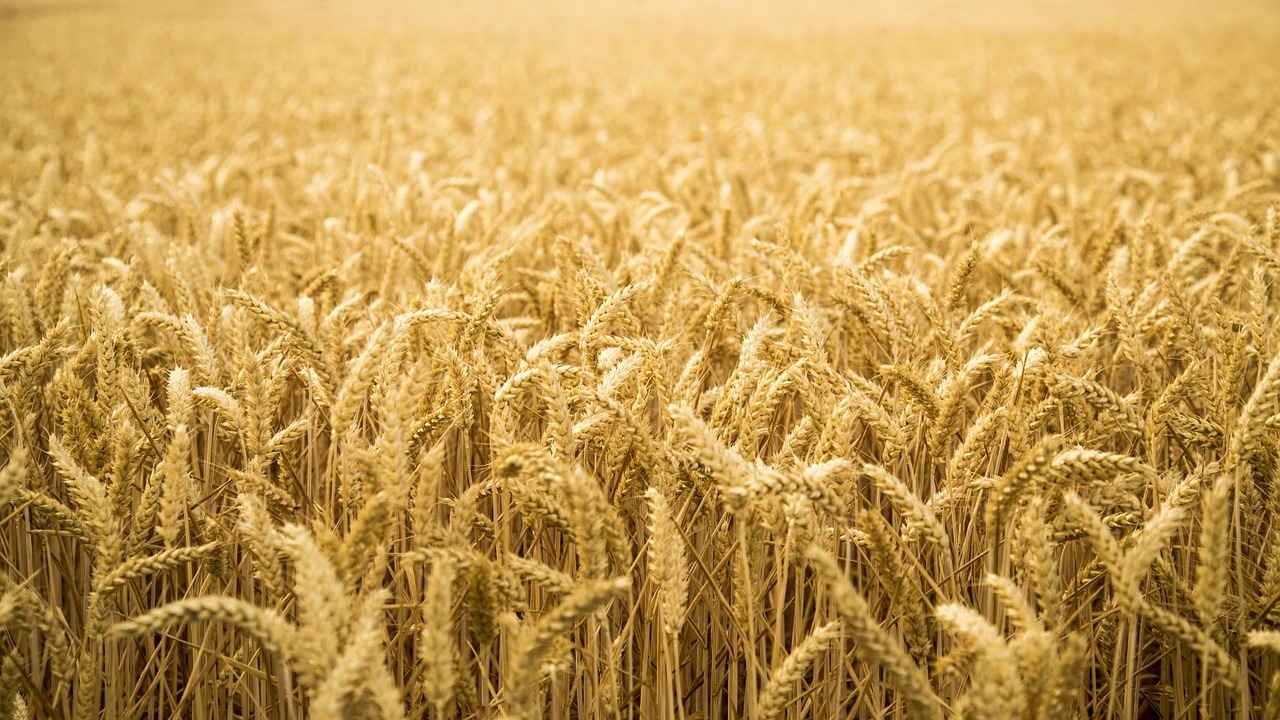 the food supply chain is crop development. Alison Bentley from NIAB, the National Institute of Agricultural Botany chewed over the question of selective plant breeding and crop development with Kat Arney...
the food supply chain is crop development. Alison Bentley from NIAB, the National Institute of Agricultural Botany chewed over the question of selective plant breeding and crop development with Kat Arney...
Alison - Yes, I guess the big turning point for crop production, or for wheat production specifically, was the green revolution which brought about reduced height in our wheat and allowed it to use nutrients more efficiently and move those nutrients into the grain. And that was really that start of this increase in yields. Since that time, yields have incrementally increased, so we've got about a 1% increase in yields each year and this is really this is the product of the breeding process. So of breeders crossing the best varieties with each other; selecting the best individuals and moving those forward into farmer's fields.
Kat - So what sort of timescale are we talking about? When did this revolution really start?
Alison - So that revolution started in the 1970s with the introduction of these reduced height types allowing the plants to use the nutrients more efficiently and it's now that we're looking at the challenge of feeding this ever-growing population; that we're saying, actually, we need more than these incremental increases to be able to fulfill that need.
Kat - Presumably, there is some kind of limit though? You can't eventually grow wheat out of nothing...
Alison - Yes, and that's one of the questions, I guess. How far can we push it? Do we know kind of ultimate type we're looking to end up with? And then we also have to consider the environmental implications of being able to grow the maximum amount of wheat on a specific amount of land, and the kind of inputs that's required to do that, and the pest control, and the insect control.
Kat - So wheat is really the plant that you're interested in - Tell me about of some of the ways that you're trying increase, I guess, the efficiency of wheat so it gets more and more 'bang for it's buck' from the field.
Alison - Yes. So wheat is very genetically complex, so it combines in it's genomes the genomes of three ancestral grass species and these came together over a number of chance hybridisation events in nature. And so what we're doing within our programme at NIAB is going back to the start of this process and looking at these progenitor species, which occur across a huge geographical range, and saying "what can we get from this diversity which we can then use to improve wheat."
Kat - So you're looking at the ancestors of wheat and saying "where did it come from and can we make it again?"
Alison - Exactly. So we're basically going back to the start of wheat and saying "can we make this again" and then "can we use this as a vehicle to access diversity that's not already available in wheat itself and what does this diversity give us, which we can then transfer to breeding."
Kat - So you've talked a lot about breeding and how, since the 70s, it's been traditional plant breeding techniques. You know, persuading plants to have sex with each other that have brought the changes that we've seen, but we've heard a lot about things like 'genetic modification' and now some of these 'genome editing' technologies that are starting to come online. Would it be more efficient to use those rather than trying to breed plants together to see what comes out?
Alison - I think they're exciting technologies but one of the, I guess, the limitations is that you need to have a gene identified or a set of candidate genes which you know want to manipulate. And when we talk about something like yields or the way a plant uses nitrogen fertilizer, those are very complex traits which also interact with the environment. So, underlying those traits, such as yield, you've probably got the additive effect of hundreds, or maybe even thousands, of genes. So, your actual practical ability to make a plant genetically modified for all of those individual genes is very challenging so it's more likely that we can use information about that genetic makeup in an additive way using sequencing technology and new technologies coming online are going to be able to use that information for breeding. But, of course, genetic modification, gene editing are exciting technologies and when we talk about something like a disease resistance gene, then you can see huge potential for that technology to be used.
Kat - You think when people drive past a field of wheat, do they think gosh, that is a product of all this breeding and all this technology?
Alison - Yes, I mean, that's amazing that that's a product of hundred of thousand of years of domestication, evolution. The technology that's gone into that is really immense.
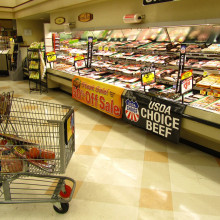
38:59 - Supermarket Sweep
Supermarket Sweep
with Eric Levy, University of Cambridge Judge Business School
In a modern globalised food system, agricultural production is only the beginning 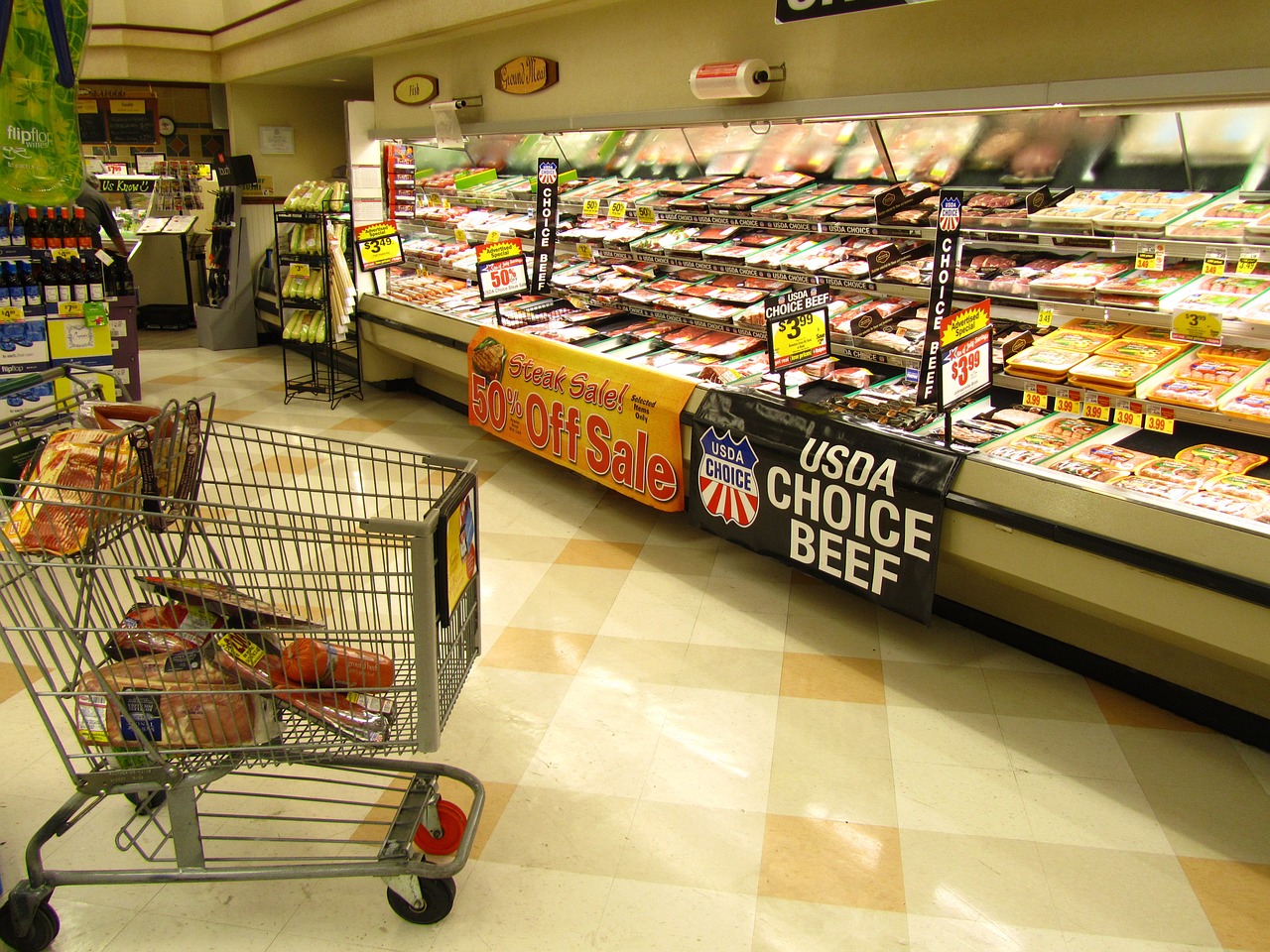 of the story. Eventually, foodstuffs make their way to the shops and that is where you come in, or where you "think" you come in! Felicity Bedford went to do her weekly shop and took along marketing expert Eric Levy to see how it's actually supermarkets that decide what you "want" to buy...
of the story. Eventually, foodstuffs make their way to the shops and that is where you come in, or where you "think" you come in! Felicity Bedford went to do her weekly shop and took along marketing expert Eric Levy to see how it's actually supermarkets that decide what you "want" to buy...
Eric - Our behaviours in the supermarket have a big influence on our health, and there's a lot of things going on in the supermarket that we don't always realise but I'm sure we'll encounter some of them with our shopping trip here.
Felicity - Let's go shopping... The first thing that I'm picking up is some apples. In front of me I've got deals, I've got different prices, different types of apple.
Eric - Well Felicity, the first thing I notice here is that one of the apples in particular is on sale and I think consumers will probably be drawn to getting a lot of apples - whether they eat all of them or not, who knows. But it's kind of the attention thing; it's attention grabbing and we really like to think we're getting a good deal.
Felicity - So the deal stickers themselves are much more brightly coloured and you're right, it's the first thing I spotted when I came up to this stall but, I'm going to pick up the other pack of apples. And only the one - there's only one of me - I don't need 12 apples for my weekly shop. Here at the milk aisle, I am presented once again with an amazing array of choice. Turning around behind me the puddings and yogurts within the supermarket; this is not something I would normally pick up but I'm sensing they've been positioned here for a reason.
Eric - So there's something in psychology called the "licensing effect" where, if you buy something healthy, all of a sudden you're going to feel really good about yourself. You'll think "wow" I just bought this item that's really healthy, so what that allows us to do is indulge in something that's less healthy. So, after picking up the milk, turn around and all of a sudden there's these chocolate mousse desserts and, they're on sale, we're going to be more likely to pick them up because we've just gotten the milk.
Felicity - I'm looking toward the six for £4. I can eat those over a couple of weeks.
Eric - Mmm. That sound's like a good deal, doesn't it? The number six, that's kind of, in psychology that's called an "anchor". So consumers tend to anchor on a number that's recommended for you on the label and we might actually be more likely to get six, or maybe even four or three, compared to if there were no number there for us to anchor on.
Felicity - So, basically what the supermarket's doing is telling me - buy six?
Eric - Definitely. One of the things supermarkets try to do is increase the amount that we purchase through some of these psychological techniques.
Felicity - And also, the fact that I'm now considering buying six is obviously having an impact upon my diet over the next few weeks.
Eric - When we have more of something there, right in front of us, we're actually more likely to eat it more quickly. So we may think, well if I buy the six, I'll have one a week for dessert but what tends to happen is you say "well, look I have all these chocolate desserts maybe I'll have one per night" because it's there, and it's in front of you, and you're looking forward to the next dessert already.
Felicity - Finishing up the list of things that I need to be picking up today, we're going to grab some cereal and you've picked up a couple of things off the shelf for comparison purposes. What should I be looking at on these two packets.
Eric - Well looking at these Felicity, I noticed that we have two brands of cereal that look like they're both healthy but, looking at this one, it actually has a lot, lot more sugar. So people might think just by seeing it has bran, they're going to assume it's a very healthy cereal, maybe without comparing it to other cereals. So it's really important to compare.
Felicity - Absolutely. They look like they're very similarly marketed; they both say that they're whole grain guaranteed, fibre, less sugar - even though that's the one which you've just pointed outs got loads more sugar and salt within it. The marketing is almost identical; they're both bright colours and I would have been fooled. You're in a rush, you pick up what you know to be a reliable brand, perhaps; that's you brand marketing and also what you think from the packaging it looks like a very healthy product. I've finished my shop, I've filled up my basket. Let's head for the checkout.
Eric - Sounds good. Very sad that our shopping trip has come to end, but one thing I noticed is that your shopping basket there is pretty much filled to the top, or even higher. So it actually turns out that supermarkets who have larger shopping baskets tend to get more filled in them, so people tend to fill their baskets to the top when they see a larger basket. There's another little psychological technique that supermarkets will use on consumers.
Felicity - The pressure to make a healthy choice, to make the sustainable choice is pretty much down to consumers and we've seen that around the supermarkets, it's a very very consuming environment. There's lots of marketing, there's lots of different signals being thrown at consumers. Is this really the way forward in improving food security within the retail environment?
Eric - Well, I think that part of it is on consumers to know what they want. If they want to eat healthier, want to eat things that are more sustainable, less packaging, so part of it is definitely on the consumer. On the other hand, there's a lot of talk about legislation, for example, to stop the two for one deals or all these multiple buying thing deals. So a lot of the times to consumers the deal will look good, but then they'll take home all the stuff and they're not going to eat it, it'll expire, and they're just going to throw it out, and it's going to be bad for the environment. So I think there are some things that the government might be able to do well to help.
Felicity - My intentions are always good when I go shopping. I'm intending to buy a healthy set of meals for the week ahead but that's not always how it pans out.
Eric - Well Felicity, it's not just you. So there is a natural tendency when we have higher level values. Say when we want to help save the environment, eat healthy. Those are things that are a little more abstract than things like having something that's right in front of you or a lower price. So a lot of the times when we see things tempting, in front of us, we'll tend to go with that rather than these values that we have. So things like lists can definitely help keep you on track in doing what you want to do. And similar to other behavioural interventions - smoking, drinking, what not - the more that you can kind of think ahead about what you want to do as opposed to just deciding on the moment, you're going to be able to take a step back and it will help you make better choices.
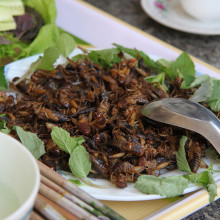
45:34 - Munching mealworms
Munching mealworms
with Dan Stott, Bug Boys
Modifiying crops and changing shopping habits is all very well but maybe we're 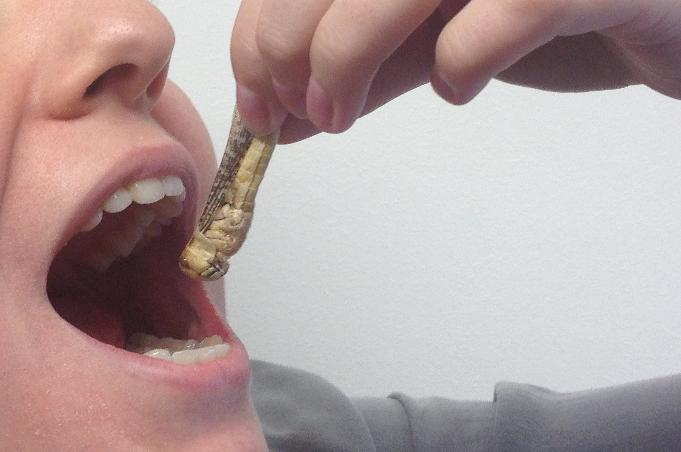 making things to complicated, perhaps the answer is right under our... feet. Dan Stott is co-founder of Bug Boys and he got Chris to try some tasty treats.
making things to complicated, perhaps the answer is right under our... feet. Dan Stott is co-founder of Bug Boys and he got Chris to try some tasty treats.
Dan - We should eat insects for several reasons. Firstly, they're really good for our health, they're very high in protein comparable to some of the highest protein powders on the market. However, insects are much better for us because they contain high amounts of vitamins, minerals and omegas and, more recently discovered, prebiotics which are great for our gut bacteria. So for health reasons alone we should be eating them...
Chris - Is this is a valid alternative to me eating meat though?
Dan - Yes. So, basically, over a span of a year if a family of four eat one meal a week with insects instead of meat, they would save the Earth 650,000 litres of water.
Chris - And where do we get these insects from? What sort of insects are you talking about encouraging people to eat and are they sustainable to produce?
Dan - At the moment, we're mainly talking about crickets, mealworms and grasshoppers; they're the main ones we know most about the nutritional profile of them. In terms of the sustainability side of things, there's lots of aspects. You need hardly any space to produce them, a little water, a little feed for them - all you need is heat. Eventually you want to link these farms up with places that are wasting heat.
Chris - You've brought in quite a good collection to show us. Would you like me to eat some of this...
Dan - Yes please!
Chris - I've never tried eating any of this. I saw a street market in Beijing where they were selling things a bit like this. I eschewed the opportunity at the time! So what shall we start with?
Dan - So, I think we'll start off there with an introductory. I've made sort of a protein bowl with some dates and nuts and then there's about 10% in one of them and about 20% cricket flour in the other...
Chris - Chrikets. So this is ground up crickets?
Dan - Ground up crickets, 100%...
Chris - To make a flour?
Dan - And then it makes a more of a powder substance.
Chris - Oh! That's delicious. Mmm. Tell you what, I've got here actually to help this go down well. Because also I've got some beer. I don't normally drink on air but this is special beer - been sent to Felicity this week. So I'll just crack into one of these to help wash this down - hold on. Would you like to try one of these?
Dan - Yes, I'd love to.
Chris - And I shall have a go as well - there we go. Right, cheers everybody - I'm going to give it a try.... Okay marks out of ten for the beer...
Dan - I'd say a nine... give myself a nine for that.
Chris - Alison?
Alison - Yes, definitely a nine.
Chris - I think that's a nine. Do you know what that's made with? This is beer brewed with "throw away bread". Stuff that would have gone in the bin and actually it's been used to make beer. And we'll find out more about that sort of thing in a second. Meanwhile, what else can you tempt me with, Dan?
Dan - I've got some whole insects here.
Chris - Can we eat those?
Dan - Yes, we can eat those.
Chris - I'm feeling daring now. Now I've gone to the 10% level, I feel I can push the boat out a bit.
Dan - So these small ones are buffalo worms.
Chris - Okay...
Dan - These naturally eat plants and grain.
Chris - Actually, they're dried aren't they...
Dan - So these are dehydrated - yes.
Chris - They're actually very nice. I'm having several handfuls of them. Umm, how do I describe it. It's crunchy, it tastes a bit like chewing on a stick - it's a bit of woody flavour. It's not unpleasant at all, actually. There's something bigger on the plate - what's the larger option?
Dan - The grasshoppers. Slightly larger than the other insects...
Chris - Umm. That's the size of my finger and it's got all it's head and everything. Someone's luckily removed most of the legs because that wouldn't be too nice. You want me to eat the whole thing - that's pretty big...
Dan - It's really big...
Chris - It doesn't look so nice... Umm. Actually, if I just shut my eyes and I didn't see it, I would say that's extremely tasty. It just looks a bit off-putting but once you get past the sort of visual thing...
Dan - It's that initial barrier at first.
Chris - I think we should ask Alison to have a go as well.
Alison - I'm definitely going to try a cricket...
Chris - I think you should do one of those big grasshoppers...
Alison - Really... I'll start with a cricket.
Chris - Go on then.
Alison - It is, it's very good. You can imagine it as a cracker I think...
Chris - With crackers, with cheese!
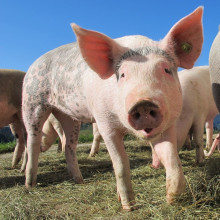
50:23 - Waste not want not
Waste not want not
with Tristram Stuart, Feedback
It's all very well eating more adventurously. But what about the food that we waste? Tristram Stuart is the founder of the organisation FeedBack, which looks at how much food goes to waste and what we need to do to tackle the problem. He explained why this is a priority to Felicity Bedford...
Tristram - We've been told by some of the major international institutions that we need to increase food production by 50, 60, some even 100% to feed the human population expected on the planet by 2050. The claim is that we can increase this production whilst decreasing environmental impact. In fact, the main way in which we are increasing global food production is by extending the amount of land that we currently put under cultivation. That means chopping down forests and draining wetlands. We know that a third of all the food currently being produced is wasted somewhere between fields and people's plates. It's wasted on farms and factories, in supermarkets and restaurants and, of course, in our own homes. That is a very easy place to start if what we need to do is increase food availability and, of course, it can be accomplished without increasing production per se.
Felicity - Surely because of the nature of globalised food production and distribution, we need, to play devil's advocate here a little bit, we need to be producing more food than is needed by the global population?
Tristram - That's absolutely right. If you want to guarantee food security, you don't just produce exactly what a population needs. It won't take long for you to come across a bad harvest and then you're in dire straights. Human civilisations have, since the very beginning of agriculture, aimed quite rightly to produce surplus. The problem is that that very basic instinct has now got to such an extent that the surpluses we produce are so far in excess of what is actually required to guarantee food security. To give you an example, in a rich country like the United States, there is available in the shops and restaraunts enough food to feed twice the population of that country. We have such an enormous buffer between us and real hunger if we used our resources more efficiently.
Felicity - We're going to inevitably have some food waste. Do you have any proposal for how that should be dealt with better?
Tristram - Yes, absolutely. One of the real opportunities that we're currently missing out on across the whole of Europe, across Australia and in half of the United States of America is that, currently, legislation prevents what humans have been doing with food waste for thousands of years, and that is to feed it back to our livestock. Instead, we grow grains and soy in South America to feed livestock in Europe and across the western world. Traditionally, livestock would be fed with our leftovers; that's what pigs and chickens are for within our agro economic system. But since 2001, after the foot and mouth outbreak was blamed on a miscreant swill feeder, who wasn't treating the food waste according to the law. The European rules made it impossible to feed any catering waste or any waste that had been handled under the same roof as meat to be fed to livestock. Now, I can understand and foresee the health concerns but, put in place a good regulatory system, it's absolutely the case that we can have a safe system for recycling food waste. And, indeed, a very recent Cambridge University study was published showing just how much land we could save if we fed food waste to our livestock instead of importing soy from South America. A piece of forest the size of Wales each year could be saved.
Felicity - Will it need more scientific evidence or simply more willing policymakers in the first place?
Tristram - It needs both. Absolutely getting microbiologists to confirm the best possible, most energy efficient and safest way of treating food waste, and ensuring that veterinarians and nutritionists can analyse the value of any particular food waste stream for animal feed. All of these things will help but the figures are so glaringly, obviously in favour of feeding food waste to pigs. It really comes down to a question of what faith we can have in a regulatory system that, in the past, went wrong and I would emphasise that we're not advocating for a return to the bad old days, before 2001 but a proper modern system; a little bit analogous to the system that guarantees food safety in the human food supply chain. We depend on a system that feeds hundreds of millions of people every day to guarantee food security - we need something similar for livestock feed.
Felicity - These bigger issues of global waste; is that something that can only be solved with policies?
Tristram - No. I've seen in my campaigning life such dramatic changes on these very issues that it gives me hope that, with a bit of energy, we can wake up the giant, the giant that is the global citizenship. If we want to make food available to people who really need it, we can really help to do that by doing something quite simple which is to enjoy food that we have and not throw it away. That's really such a simple thing that everyone can practice in the own homes and, indeed, demand that the businesses that they give money to every day, also comply with that really basic ethical criterion, which is not to dispose of food when it's perfectly edible.

56:30 - Do our voices sound different in our heads?
Do our voices sound different in our heads?
Connie Orbach persuaded Dr Nick Gibbons, voice surgery specialist from Lewisham Hospital to take her through Che's question... Connie - In radio, I am constantly disappointed by the sound of my own voice so, I was keen to bring in the experts for this one. Here's Dr Nick Gibbens, a specialist in voice surgery.Nick - The way we hear is by sound waves, which are pressure waves going through the air, coming in through the ear canal, through the eardrum and the small bones of hearing, into the inner ear where it creates electrical signals that get sent to the brain, and the brain interprets that as hearing. Now that's the majority of the way we hear. However, the second way we hear is actually sound waves, pressure waves, going in through the bones of the skull directly into the inner ear, rather than through the ear canal. But, when we speak, the vocal folds vibrate and produces sound waves and, because the sounds are being produced inside us, a lot more of it is actually transmitted through the tissues and the bones of the skull directly into the inner ear. The frequency at which the tissues of the head transmit the sound best is quite low, so these low frequencies are accentuated. So, our voices sound, to us, a bit lower and a bit more resonant. So, when you hear yourself on a tape recorder, it always sounds a bit more tinny, and a bit more whinney, and a bit higher. So we always go "oh no, that sounds terrible" but actually that's what everyone else hears. The only person who hears the voice as you sound - is you.Connie - How disappointing. In radio, we add resonance to make people sound a bit more 'god like'. It's like having a producer on our own voices.Nick - Yes, I imagine that's exactly right. It's the depth, and the volume, and the broadness of the voice that sounds very good.Connie -So when I have a cold and inside my head I feel like I'm blocked off from the rest of the world - I can't hear myself properly. What's going on there?Nick - Two things there. The first one is: when you normally produce a voice, the vocal folds vibrate and, like ripples in a pond when you throw stones in them, that's what happens when the pressure waves come from your voice box and they come out through your mouth, and they come out through your nose and they reverberate around your sinuses. When you've got a cold, you don't have the nose and the sinuses, they're completely blocked up, so it's only reverberating round your throat and your mouth, so immediately that's going to alter the sound your voice. The second thing is: even less sound is going out of your mouth and in through your ears, for you to hear it, and more of it (percentage wise) is reverberating up through the tissues of your skull into your inner ear so, it's going to sound even more different than it is normally.









Comments
Add a comment